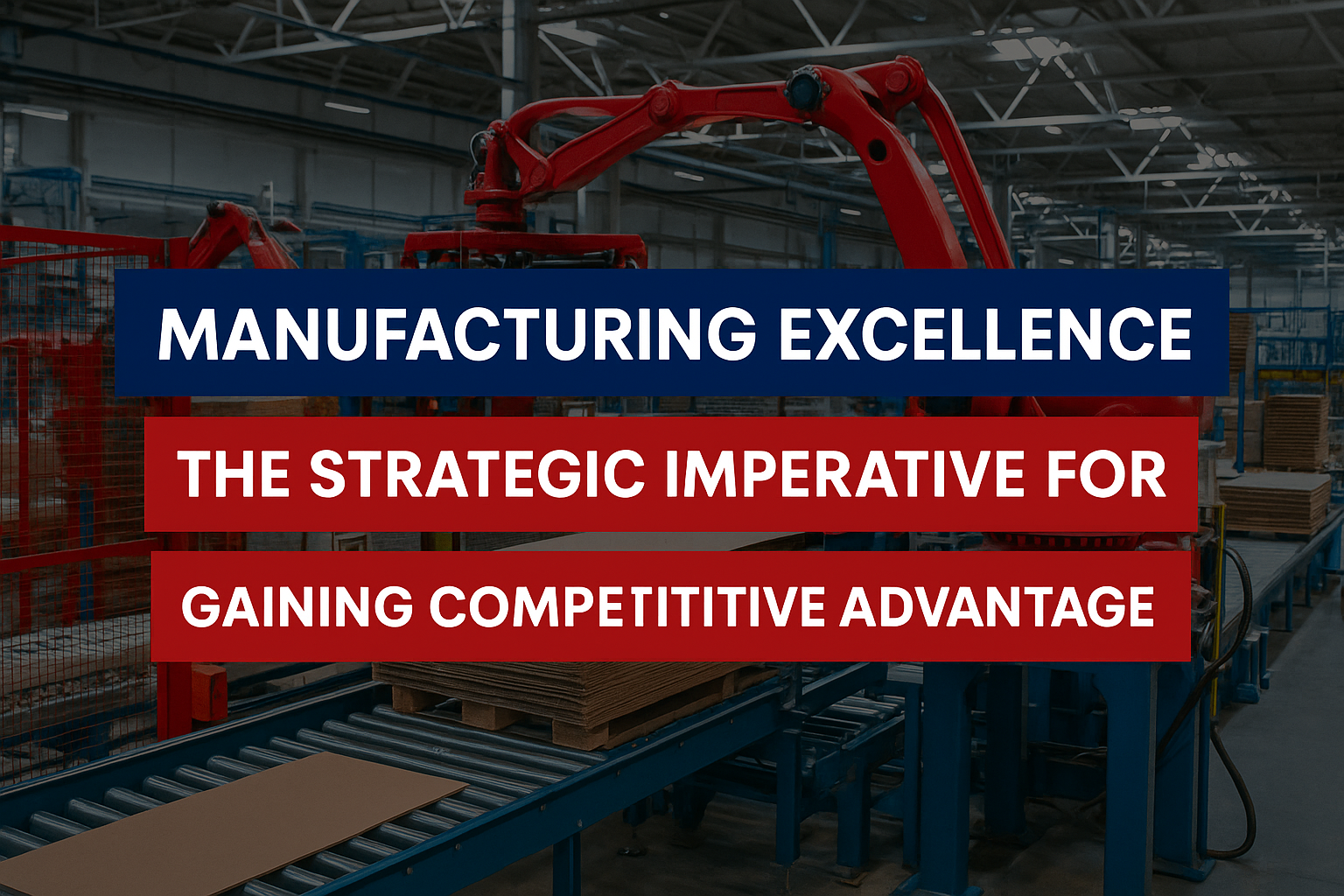In today’s hyper-competitive and digital-first manufacturing environment, Manufacturing Excellence is not just an aspiration—it is a strategic necessity. It enables organizations to achieve superior outcomes across productivity, quality, cost, agility, and employee engagement. More critically, it forms the foundation for long-term competitiveness, especially as global supply chains evolve and customer expectations rise.
This blog presents a strategic yet practical guide to understanding manufacturing excellence—its principles, business value, and real-world implementation—augmented by examples from India (60%) and global leaders in Europe and the US (40%).
What Is Manufacturing Excellence?
At its core, manufacturing excellence is a systematic and enterprise-wide approach to achieving world-class operational performance. It extends beyond the shop floor to encompass leadership behavior, capability development, and a deep culture of continuous improvement.
Rather than a one-time initiative, it is a continuous journey where Lean principles, quality systems, digital tools, and people empowerment converge to unlock sustainable results.
Core Principles of Manufacturing Excellence
1. Continuous Improvement and Lean Thinking
A hallmark of world-class manufacturing is the relentless identification and elimination of waste. A leading automotive manufacturer in India reduced cycle times by over 30% through daily Kaizen activities and structured Gemba walks. In Europe, an aerospace firm applies value stream mapping and digital simulation to reconfigure assembly lines in near real-time.
2. Operational Efficiency and Waste Elimination
The pursuit of efficiency is not about doing more with less—it’s about doing more with precision. A high-volume dairy processor in India adopted SMED techniques and automated CIP (Clean-in-Place) systems to reduce changeover times and increase uptime. Similarly, an American electric vehicle plant uses AI-powered sensors to dynamically optimize energy consumption and minimize idle time.
3. Built-in Quality and Defect Prevention
“Right first time” is the only acceptable quality standard. An Indian pharmaceutical enterprise institutionalized statistical process control (SPC) and visual management systems, reducing deviations by 40%. In Germany, a leading machinery manufacturer applies digital twins for error-proofing and predictive quality control.
4. People-Centric Operations
Empowered people create resilient systems. A textile export unit in South India formed quality circles and shop floor councils to crowdsource process improvements. In Spain, a global agricultural equipment company uses team-based scorecards to reinforce ownership and cross-functional collaboration.
5. Integrated Supply Chain Collaboration
An automotive OEM in Western India digitized its supplier performance tracking, enabling tier-1 and tier-2 vendors to respond to schedule changes in real time. In the US, a consumer goods giant synchronizes its production planning with demand signals using real-time analytics and supplier portals.
The Four Pillars of Manufacturing Excellence
Safety : Non-negotiable baseline for performance. Firms in India are embedding IoT-based PPE monitoring.
Quality : Differentiator in commoditized markets. Leading companies use inline defect analytics.
Yield : Directly impacts cost and profitability. Textile leaders optimize batch-wise yield tracking.
Productivity : Enables scale and responsiveness. Firms globally are adopting cobots and digital work instructions.
Common Challenges
While the destination is clear, the journey is not without its headwinds:
– High initial capex for automation and digital tools
– Cultural resistance to transparency and standardization
– Fragmented legacy systems
– Skill gaps in frontline teams
– Misaligned incentives across departments
Measuring Excellence: From Activity to Impact
Key Performance Indicators (KPIs) must be tiered and role-specific. Best-in-class organizations monitor:
– OEE (Overall Equipment Effectiveness)
– FPY (First Pass Yield)
– Downtime and breakdown analysis
– Inventory turnover ratios
– On-time delivery rates
Firms in India are increasingly deploying cloud-based dashboards and MES systems for real-time analytics and decision support.
Value Realization: Why Manufacturing Excellence Matters
Cost Efficiency: A refrigeration manufacturer in India improved EBITDA margins by 8% through Lean-led layout redesigns.
Customer Satisfaction: A US electric mobility player reduced warranty claims by 25% post process capability improvements.
Employee Engagement: Indian firms with structured training and feedback programs report 2x higher retention.
Market Agility: Modular production systems help European manufacturers switch product lines in under 24 hours.
Implementation Playbook
1. Start with the Why : Define a shared vision for excellence and link it to business imperatives.
2. Standardize What Works : Document SOPs, visualize metrics, and institutionalize audits.
3. Digitize for Visibility : Implement IoT, MES, and real-time monitoring tools for transparency.
4. Build Capabilities : Invest in frontline training, problem-solving skills, and cross-functional exposure.
5. Sustain Through Culture : Recognize improvements, encourage experimentation, and drive leadership Gemba.
Conclusion
Manufacturing excellence is not a cost—it’s an investment in resilience, customer trust, and long-term growth. Whether it’s an Indian engineering major or a European aircraft manufacturer, those who embed excellence into their DNA will lead the next era of industrial competitiveness.
Strategic Linkages: Why CXOs Should Champion Manufacturing Excellence
Leadership engagement is often the most overlooked yet impactful enabler of manufacturing transformation. When CXOs actively champion excellence—through visible Gemba walks, storytelling, and strategic reviews—they create the conditions for systemic change. For example, in several Indian conglomerates, structured “excellence councils” chaired by plant heads and CXOs have enabled faster cross-functional alignment and better investment prioritization.
Moreover, aligning excellence goals with business KPIs—like EBITDA improvement, NPS, or carbon intensity—elevates the narrative from operational to strategic. This is particularly critical as ESG goals, talent retention, and cost competitiveness converge into a single performance imperative.
Future-Proofing Through Innovation and Sustainability
Modern manufacturing excellence goes beyond lean—it integrates **sustainability, digitalization, and resilience**. Companies that embed energy optimization, circular material flows, and water recycling in their operational model are better prepared for the future.
An Indian textile exporter, for instance, integrated solar power and ZLD (Zero Liquid Discharge) systems into its factory operations, resulting in both operational savings and stronger customer appeal. In Europe, manufacturers are investing in real-time carbon footprint tracking across their supply chains to comply with upcoming regulatory shifts.



